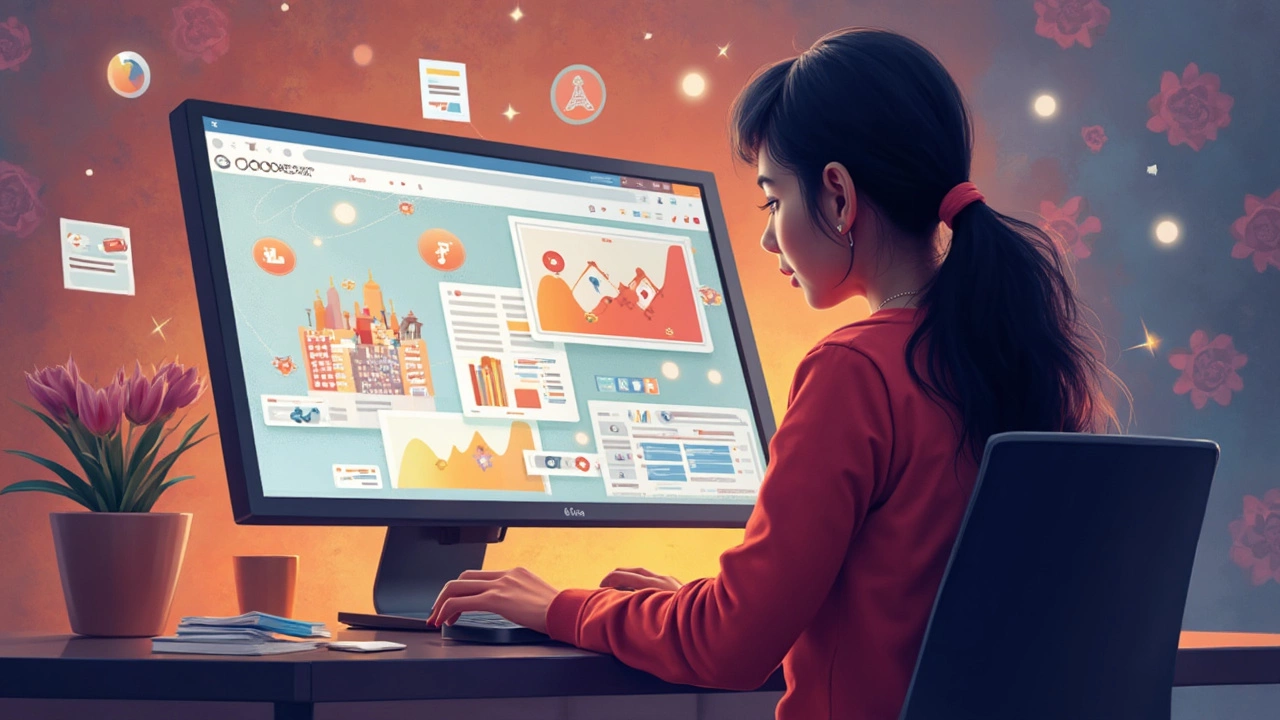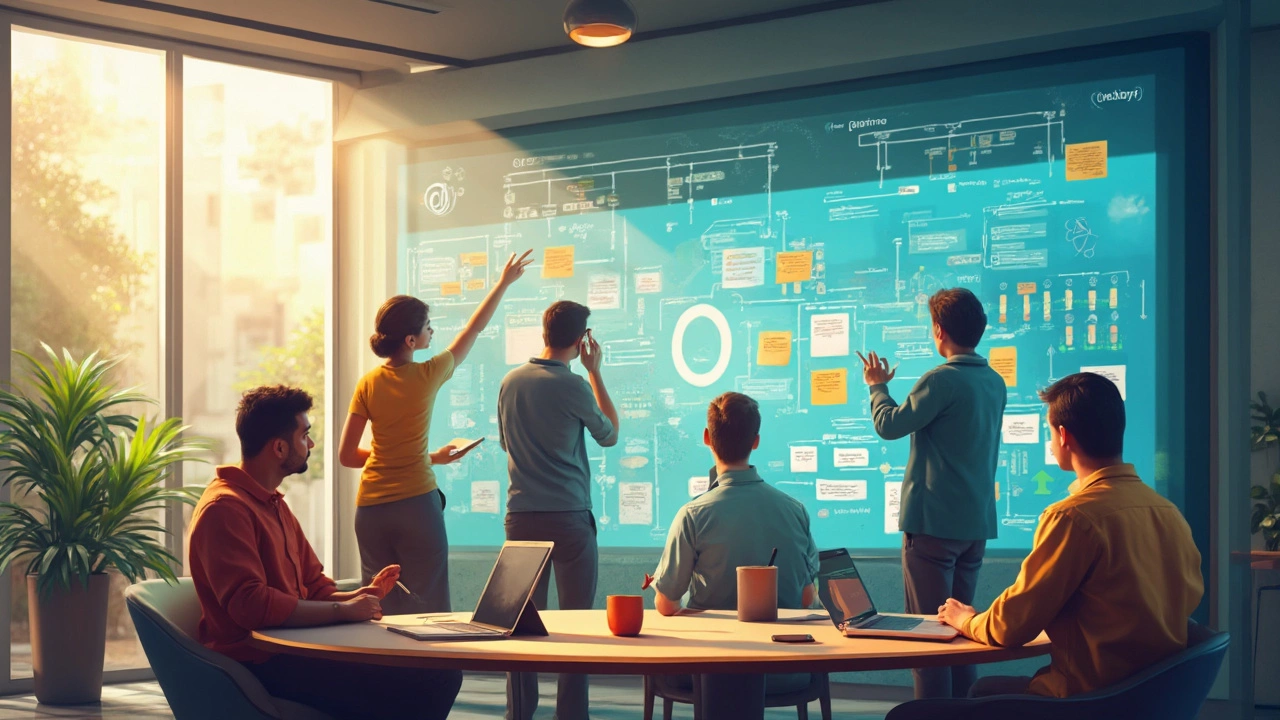Ever tried to build an online course and wondered why some efforts just flop? Here's a secret most people miss: eLearning success isn't random. It follows five clear phases. Get these right, and you're not just stuffing content on a screen—you're actually helping people learn and making life easier for everyone running the show.
If you've ever felt stuck, lost, or overwhelmed by tech jargon, you're not alone. Here's some good news: anyone can get a grip on the eLearning process. You don't need decades of experience or fancy titles. All you need is a clear understanding of the five phases and how to use them. Ready to figure out where things usually go off track and how to fix them? Let's break down the basic roadmap every solid eLearning platform follows, minus the fluff and confusion.
- Phase 1: Analysis—Getting the Lay of the Land
- Phase 2: Design—Mapping Out the Experience
- Phase 3: Development—Bringing Content to Life
- Phase 4 & 5: Implementation and Evaluation—Launch and Make It Better
Phase 1: Analysis—Getting the Lay of the Land
Before you jump into picking tools or designing graphics, stop and figure out what the real needs are. That’s what phase one is all about. If you skip this step, it’s like cooking without checking if you have the ingredients. In eLearning, this means looking at who your learners are, what they need to learn, and what you hope to change with your course.
Start by asking questions like: Who are my learners? What do they already know? What problems am I actually trying to solve? Are there specific business goals I need to hit?
- Define your learning objectives—be specific. “Understand company safety rules” can’t be measured, but “identify three key safety rules” can.
- Look at what tech your audience can really use. Don’t expect everyone to have a VR headset or the patience for glitchy mobile apps.
- Talk to real people—surveys and quick interviews usually beat guessing. It’s fast and you’ll spot big blind spots early.
If you want a concrete snapshot, check out the numbers below. These stats taken from a 2023 workplace training survey show just how often a weak analysis phase causes headaches:
| Pain Point | % of Projects Affected |
|---|---|
| Poor alignment with job needs | 41% |
| Learners skipping the course | 31% |
| Too technical for audience | 24% |
| Unclear learning objectives | 28% |
This isn’t just paperwork. Clear front-end analysis in the eLearning phases saves time, money, and headaches down the line. It sets the tone for everything that comes next. Think of it as scouting the trail before you start hiking—you get a map, know where the potholes are, and you’re way less likely to get lost.
Phase 2: Design—Mapping Out the Experience
This is where the course starts to take shape. Think of this phase as laying out all the moving parts before you even touch any software. The goal is to answer a simple question: how can you make the eLearning phases actually work for real people?
The first step? Figure out the learning objectives. You want to know exactly what learners should take away when they're done. For example, will they learn to write better emails, fix a machine, or ace a test? If you get specific here, everything else falls into place much easier.
Next comes picking the course structure. People don’t love endless slides, so mix things up. Think short video lectures, quick quizzes, scenario-based problems, or real-life mini-projects. Keep it relatable and as interactive as possible. Research from the eLearning Industry group shows courses with interactive content see completion rates jump by up to 50% compared to plain, static lessons.
- Chunk content into bite-sized modules—it helps people stick with it.
- Link each module directly to a learning outcome.
- Add checkpoints: simple quizzes or reflection tasks to keep folks engaged.
- Use visuals—images, diagrams, or even gifs—wherever you can.
Don't wing the flow of your course. Storyboards and wireframes let you map out exactly how the course will look and feel, slide by slide or screen by screen. Most top instructional designers sketch a rough layout first, which makes mistakes easier to spot before you invest hours building stuff.
And here’s something most people skip—accessibility. Make sure your design works for everyone, including those with disabilities. Use big, clear fonts, check color contrast, and always add captions for videos. According to WebAIM’s 2024 report, more than 60% of eLearning platforms still overlook basic accessibility checks. That’s a big chunk of learners left behind—don’t let your course join them.
| Design Element | Why It Matters |
|---|---|
| Clear Objectives | Keeps learning focused and measurable |
| Interactive Activities | Boosts completion rates and memory |
| Easy Navigation | Stops learners from getting lost or frustrated |
| Accessibility Features | Makes sure everyone can take part |
| Consistent Layout | Avoids confusion, feels familiar |
The design phase isn’t just about making things look pretty. It’s about making the learning experience smooth, clear, and actually enjoyable. The time you spend setting this up keeps learners from getting lost or bored—and honestly, it saves you headaches later on.

Phase 3: Development—Bringing Content to Life
This is where the real action happens. After planning and designing, it's time to actually build your course. Development means turning ideas and outlines into videos, quizzes, and interactive content that students can use at their own pace. In the world of eLearning phases, this is the “let’s build it” moment—and it’s what most learners see and interact with.
This phase covers:
- Recording and editing videos or audio
- Creating slides, graphics, and animations
- Building assessments (like quizzes and activities)
- Programming interactive lessons (think drag-and-drop, matching, or case studies)
- Adding accessibility features—like captions, alt text, and screen reader compatibility
Don’t skip the boring stuff: make sure every video or file matches your original plan. A lot of beginners dump a bunch of PDFs online, call it finished, and wonder why engagement tanks. The best courses pull students in, keep them clicking, and challenge them to use what they learn.
Teamwork matters in this phase. Usually, it brings together different people: subject matter experts, content writers, designers, and IT folks. Each person has a job, but they need to check in regularly to keep everything lined up and avoid last-minute headaches.
Here’s something you probably didn’t expect: It takes more time to create one minute of eLearning than you think. According to a survey by Chapman Alliance, building just one hour of basic eLearning content takes about 49 hours of development. More complex projects take even longer. Check out these average development times:
| Type of eLearning | Development Hours per 1 Hour of Content |
|---|---|
| Basic (PowerPoint & straight narration) | 49 |
| Interactive (quizzes, simple branching) | 127 |
| Advanced (full multimedia, games, scenarios) | 716 |
That doesn't mean you have to go all out, but it's a good reminder to be realistic about time and resources.
Want to make your development phase smoother?
- Pick authoring tools that fit your needs. Articulate Storyline and Adobe Captivate are popular, but sometimes simple tools like Canva or Google Slides work for small budgets.
- Test as you go. Try your videos and modules on different devices. Nothing kills motivation faster than a lesson that doesn't open on someone’s phone.
- Keep file sizes low. Fast-loading courses hold attention better and don't stress out people with slow internet.
- Stick to your brand and course style guide to keep everything looking and sounding right.
If you get this phase right, users will rave about their experience (and probably come back for more). Mess it up, and all the hard work from previous phases goes to waste. Development is all about making online training not just available, but actually useful and engaging.
Phase 4 & 5: Implementation and Evaluation—Launch and Make It Better
Now you’ve got all the pieces ready. Time to hit 'publish' and get your course out into the real world. This is what folks call the Implementation phase. You upload everything onto your eLearning platform, check that all links work, videos play, and learners can actually access the stuff you’ve built. Don’t just trust your gut—test it with a small pilot group. Let them poke around, find broken stuff, and drop feedback. Fix issues before going all-in.
Once people are learning online, keep an eye on things. Problems rarely pop up at a good time—logins might break, someone’s video won’t load, or students blaze through quizzes too quickly. Quick tip: set up a basic support system (even if it’s just a shared email inbox or WhatsApp group) to help users fast. Tutorial videos and FAQ pages also save tons of repetitive support headaches.
Onto Phase 5: Evaluation—where you actually find out if what you built works. Don’t be shy about asking for feedback. Use surveys, in-app polls, or just direct questions. You want honest takes on what was smooth and what totally bombed. Track your analytics, too. Data is your friend; it points to drop-off points and top-performing modules.
- If quiz scores are dipping, maybe you need clearer instructions or video walkthroughs.
- If people aren’t finishing modules, check if they’re too long or confusing.
- Always compare what you set out to teach with what folks actually learned—ask for specific examples if you can.
Companies using continuous evaluation boost their completion rates by up to 35%, according to a 2024 report from the Learning Guild. It’s all about getting better with every round.
| Step | Tool/Method | Goal |
|---|---|---|
| Pilot Testing | Beta group, direct invites | Find & fix problems before launch |
| Support | Email, chat, FAQs, video guides | Help users solve common issues quickly |
| Surveys & Polls | Google Forms, SurveyMonkey | Gather real learner feedback |
| Analytics Monitoring | Platform analytics, quizzes | Spot trends, drop-offs, quiz bottlenecks |
If something isn’t working, change it. No shame in tweaking content, rearranging modules, or even cutting what’s not useful. Successful eLearning platforms are never static—they adapt, update, and keep users coming back for more. Put in the effort after launch, and your course will actually help people, not just sit there collecting digital dust.

